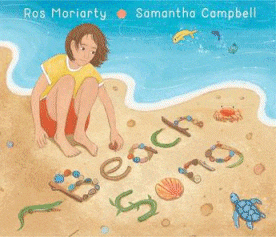
Beach Song
Beach Song
Ros Moriarty
Samantha Campbell
A&U Children’s, 2024
32pp., hbk., RRP $A24.99
9781761180248
A day at the seashore can be full of surprise, wonder and excitement.

Beach Song
Beach Song
Ros Moriarty
Samantha Campbell
A&U Children’s, 2024
32pp., hbk., RRP $A24.99
9781761180248
A day at the seashore can be full of surprise, wonder and excitement.
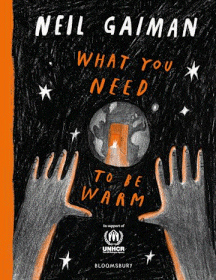
What You Need to Be Warm
What You Need to Be Warm
Neil Gaiman
Bloomsbury, 2023
32pp., hbk., RRP $A19.99
9781526660619
I have neither the desire or the skill to review this book because anything I say or write pales into insignificance in the presence of the wondrous Neil Gaiman. Thus I am going to use the foreword and the publisher’s notes to show what this book is about and why I immediately recommended it to colleagues who were seeking just such a piece…
in 2019, before COVID, the Russian invasion of Ukraine and the current Israeli conflict, winter was coming to the northern hemisphere and people were going to be cold , especially people who didn’t have homes because they had fled the fighting in their countries or their homes, often their villages and towns, had been destroyed. To draw attention to their plight Neil Gaiman asked his social media followers what reminded them of warmth. And from the tens of thousands of replies, each with a specific memory, he wove the responses into a long green scarf, so symbolic of being snuggled in warmth, and into a poem that became a film and now a book illustrated by people like Chris Riddell, Benji Davies, Yuliya Gwilym, Nadine Kaadan, Daniel Egnéus, Pam Smy, Petr Horácek, Beth Suzanna, Bagram Ibatoulline, Marie-Alice Harel, Majid Adin and Richard Jones, with a thought-provoking cover from Oliver Jeffers.
It is “an exploration of displacement and flight from conflict through the objects and memories that represent warmth in cold times. It is about our right to feel safe, whoever we are and wherever we are from, and about welcoming those who find themselves far from home. “
Sadly, in 2023, winter is again coming to the northern hemisphere and more people than ever are without a home, or warmth whether that’s wrapping your hands around a baked potato on a winter’s night or wrapping yourself in a blanket knitted by your grandmother or just the warmth of feeling safe indoors, so sales of every copy of this book will help support the work of UNHCR, the UN Refugee Agency, which helps forcibly displaced communities and stateless people across the world.
And if you want to do more, check out Wrap With Love and perhaps start a knitting group in the new year.
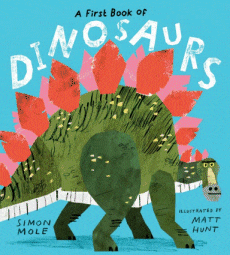
A First Book of Dinosaurs
A First Book of Dinosaurs
Simon Mole
Matt Hunt
Walker Books, 2023
80pp., hbk., RRP $A39.99
9781406396096
It was an era that lasted about 180 million years over 66 million years ago and yet it still fascinates old and young alike, so much so that books about dinosaurs – fact or fiction – are regularly published for an eager audience. This one, written for an adult to share with a younger reader is one of the latest.
Bold, contemporary illustrations and short poems with vivid language introduce young readers to this world of “eat or be eaten” . Divided into the chapters of ‘Meet the Dinosaurs, Eat or be Eaten, Dinosaur Families and The End. OR is it?’, each dinosaur or theme has its own double page spread with lively, unique graphics and a short poem, often in the voice of the dinosaur itself. Some like brachiosaurus and tyrannosaurus rex will be familiar but others such as halszkaraptor and therizinosaurus will be new so the pronunciation guide is handy, and although the descriptions – using a variety of poetry styles – are brief, there is enough information to inspire further research for those who want to know more, as well as offering an opportunity for older students to compare Mole’s style with the more traditional fact-and-figures books.
Something new and unique to share about something old and common.
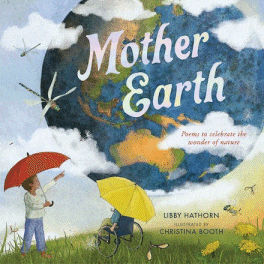
Mother Earth: Poems to celebrate the wonder of nature
Mother Earth: Poems to celebrate the wonder of nature
Libby Hathorn
Christina Booth
Lothian Children’s, 2023
32pp., hbk., RRP $A24.99
9780734421555
Encapsulated in these 32 pages plus the endpapers could be your whole year’s curriculum to satisfy the sustainability cross-curriculum priority, particularly the concept that focuses on “the interdependent and dynamic nature of systems that support all life on Earth and our collective wellbeing.”
From the very first haiku on the front endpaper…
Below ground tree-talk
Nodes and links and fungal
threads
Reaching out to touch
this is the most engaging collection of poems that celebrate Mother Nature, and the connections between her and her children and between us and them. No matter its format or structure, each reflects on the wondrous things that are available to us all if we choose to look. Some, such as Garden Australia, celebrate the everyday miracles,; others, like Beach Blues, commiserate what has been lost; but each and all offers the opportunity to inspect and reflect on that which is under our nose. Accompanied by the most exquisite illustrations that range from the whimsical like the cane toad chorus to the mysterious of the valley under the rock, this is one for those who love the magic of lyrical, picture-making language as well as those who prefer more factual content – a combination that is very rare. Take the start of Bush Picnic…
Kangaroos high kick
wombats waddle
bilbies burrow
cockatoos squabble…
Factually accurate but expressed divinely.
Thus, this is not only the ideal springboard to explore the focus of each poem and how it teaches us about those critical systems on which we depend, but also gives the reader the opportunity to respond to their own discoveries.
There have been many storybooks of late that have encouraged our young children to be more aware of the world that is at their back door, but how can we make their observations more meaningful, help them find the wonder in what they see? By having them go outside to select just one thing that captures their imagination -perhaps something as simple as a dead leaf on the ground – examine it thoroughly, draw it and then encouraging them to think about its story of how and why and tell that story in their own way and words, we are providing the perfect platform for learning, appreciating, expressing…
To me, this is one of those symbiotic pairings of author and illustrator that produces something both mystical and magical and is a must-have in any teacher toolbox.
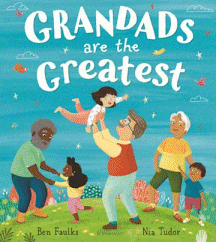
Grandads are the Greatest
Grandads are the Greatest
Ben Faulkes
Nia Tudor
Bloomsbury, 2023
32pp., pbk., RRP $A16.99
9781408867570
It is the summer picnic especially for grandads and their grandchildren and a chance to celebrate their relationship. But being a grandad is about the only thing the men have in common . For each one has a different career or interest – baker, barber, explorer, inventor, magician… But they all share one passion – their love for their grandchildren.
Written in rhyme this is a joyful picture book that honours these special men and the wonder and happiness they bring to the lives of their young ones. As well as helping the child to understand the structure of the family tree, it also offers them the opportunity to share what is special about their own grandfather and would be the perfect companion to What do you call your Grandpa?
One to set aside for Grandparents’ Day in your school.
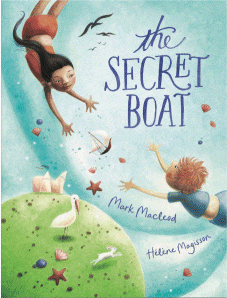
The Secret Boat
The Secret Boat
Mark Macleod
Hélène Magisson
Dirt Lane Press, 2023
40pp., hbk., RRP $A24.99
9780648899679
The child’s literacy development and mastery is underpinned by a rich, imaginative and informed vocabulary and the poems in this beautifully illustrated book certainly contribute to this. Using a variety of familiar situations which “take the reader from beachside to countryside, from revolting to delicious, from realism to fantasy, and end with a suite of bedtime meditations” the clever, creative use of words paints pictures that little ones will love to here and visualise over and over again.
Who doesn’t have a smile as they picture this…
It’s soft inside
my mother’s pouch.
I can hardly feel her hopping.
But on the way
back home again,
I’m squashed in with the shopping. OUCH.
And who is not taken back to the beach when they hear this…
The bubbles giggle
up the sand,
tickle our toes
on the shore.
They take a breath,
they run away
and then come back for more.
Just listening to the rhythm and rhyme of language teaches children so much about how they, themselves, can and will express themselves, but taking a few moments to explore what is being said in these short, often whimsical, poems empowers them to be more observant of their world and try to describe it for themselves. Next time they let the waves just tickle their toes they will think of the bubbles giggling as they make those toes curl up and jump.
While the Australian Curriculum has a strong strand that includes a focus on vocabulary, the NSW syllabus is more explicit requiring students from Kindergarten to use “Tier 2 vocabulary to extend and elaborate ideas” with Tier 2 words being defined as “high utility for mature language users and are found across a variety of domains” which “add power and precision to written and spoken language” and this collection has all that is necessary to support that outcome. Even if it is not used in the classroom formally, the images that are built as the words roll so naturally off the tongue to make the ordinary extraordinary make this just the best introduction to the poetry genre for young people and while the illustrations are exquisite, the words themselves are enough to just shut your eyes, listen and imagine.
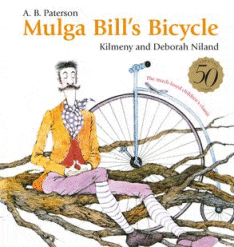
Mulga Bills Bicycle
Mulga Bill’s Bicycle: 50th Anniversary Edition
A. B. (Banjo) Paterson
Kilmeny Niland, Deborah Niland
HarperCollins, 2023
32pp., hbk., RRP $A24.99
9781460763728
“Twas Mulga Bill from Eaglehawk, that caught the cycling craze’
He turned away the good old horse that served him many days;
He dressed himself in cycling clothes, resplendent to be seen’
He hurried of to town and bought a shining new machine…”
But despite his boasting that “there’s none can ride like me”, he finds getting on the penny-farthing difficult enough and that riding is nothing like he anticipated…
This is one of Banjo Paterson’s classics, an hilarious tale of misadventure, that was first brought to life for young readers by the illustrations of sisters Kilmeny and Deborah Niland in 1973 and has remained a favourite on library shelves for 50 years, often being the introduction to other works by Paterson for those same young readers. While Paterson’s words tell the story of Mulga Bill’s crazy ride, it is the action and expressions that have been captured in the illustrations that ensure the reader is totally immersed in the story, invested in the inevitable outcome – can anyone survive such an out-of-control ride?
While bicycles have certainly changed since this poem was first published in 1896, perhaps sparking an investigation into how they, or even transport and travel itself has evolved since then, Bill’s embracing the new technology remains the same for many. There are always going to be the early adopters and the late bloomers and students might like to consider which they are and the pros and cons of each approach. Some have suggested that in the era that the poem was written, the “safety bicycle” would have been more common that the penny-farthing and that perhaps the illustrators used poetic licence with Paterson’s words to create something more appealing, opening opportunities to discuss whether it is okay to do this, or to rearrange historical events or geographical places and so forth to make a story more engaging. Should the fiction have precedence over the facts? Some students may even have examples they can share as authors acknowledge their fiddling with the facts in many historical stories.
Or they might just enjoy this 50th anniversary edition for the fun and laughter it evokes!
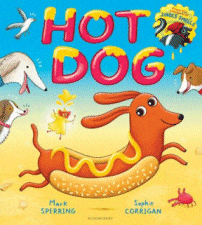
Hot Dog
Hot Dog
Mark Sperring
Sophie Corrigan
Bloomsbury, 2022
32pp., pbk., RRP $A14.99
9781408876114
On the fast food stand at the beach lies a hot dog – a sausage and bun – who is very glum as he watches all the real dogs gallivanting and cavorting in the waves and sand. How he longed to be like them with heads and tails and feet. But when the Mustard Fairy makes his dreams come true, will he be accepted by the other dogs? Or will he have to fight for his place in the sun?
How refreshing it is to just read a story for the share joy and silliness of it, to just savour the rhyme and rhythm rolling off your tongue with no underlying didacticism, although there could be a slight flavour of “be careful what you wish for.” From the team behind Santa Jaws, Mince Spies, and Jingle Smells , this is another hilarious fast-paced romp that needs to be shared just for the fun of it, to entertain the reader and make them laugh. And as our beach days approach, let our imaginations roam wild with what if…
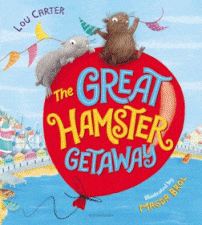
The Great Hamster Getaway
The Great Hamster Getaway
Lou Carter
Magda Brol
Bloomsbury, 2022
32pp., pbk., RRP $A14.99
9781408878934
Imagine being stuck in a wire cage, riding a wheel that goes nowhere, eating food that is tasteless and having to live on wood shavings that get stuck in your toes! No wonder Raffleton Grey was bored, dreamt of running on pebbles, splashing in the sea and going to the fair. And so he devises a most elaborate escape plan and find himself not only outside, but in the company of Puckerford Brown, another hamster who has also escaped and is looking for adventure.
And so they have their day out full of fun and food, but when night closes in, it is a different story…
The best thing about sharing stories with little ones is the joy in letting the words roll off your tongue, revelling in the pictures and finding out what happens in the end – and so it is with this story. The rollicking rhyme and rhythm carry it along as Raffleten Grey plots his escape, puts it into action, and shares the most glorious day out with his new friend, and we hold our breath as the nighttime stalkers appear…
This is the latest from the creator of both There Is No Big Bad Wolf In This Story and There Is NO Dragon In This Story and Lou Carter has nailed creating stories that entertain and encourage children to revel in the printed word. Her ingenious plan for Raffleton Grey’s escape and then return are perfectly interpreted by Magda Brol and the whole is an engaging read with a subtle message of “be careful what you wish for” that has the happy, satisfying ending that young readers want.
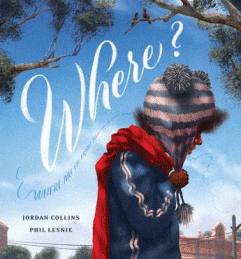
Where?
Where?
Jordan Collins
Phil Lesnie
A & U Children’s, 2022
32pp., hbk., RRP $A24.99
9781760526382
‘Where are you from?’ they say.
What they mean is,
‘Why is your skin that colour?’
‘Why does your hair look like that?’
I am from the mountains,
The seas and the sky.
I am from children of millions of years,
A timeline of humanity.
I am from this planet
And all others.
Being African-American-Greek-Australian with dark skin and curly hair, the author wrote this poem in response to a lifetime of being asked questions like, ‘where are you from?’ in an attempt to show, that, ultimately, we are all from the same place … “the primate who decided to walk upon two legs for the first time” and all those who have followed through time and generations.
Powerfully illustrated by another who has also experienced that constant questioning, this is a book to challenge the reader’s thinking to look beyond the immediate physical appearance that makes us unique and consider all that has gone before to make us the same. It is an opportunity for more mature readers to step beyond the multitude of stories that focus on who they are as individuals and the importance of being true to oneself, and look at a bigger philosophical picture of humanity as a whole with a shared heritage and history.